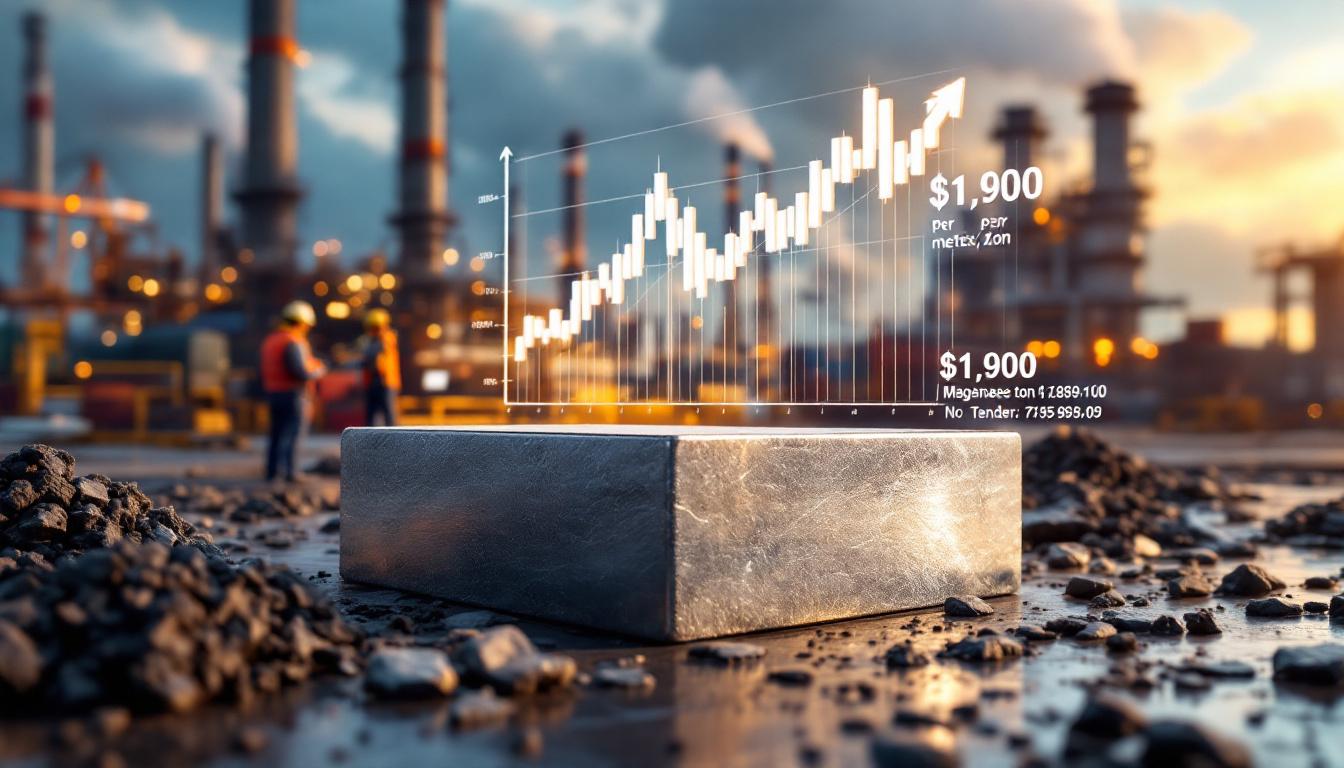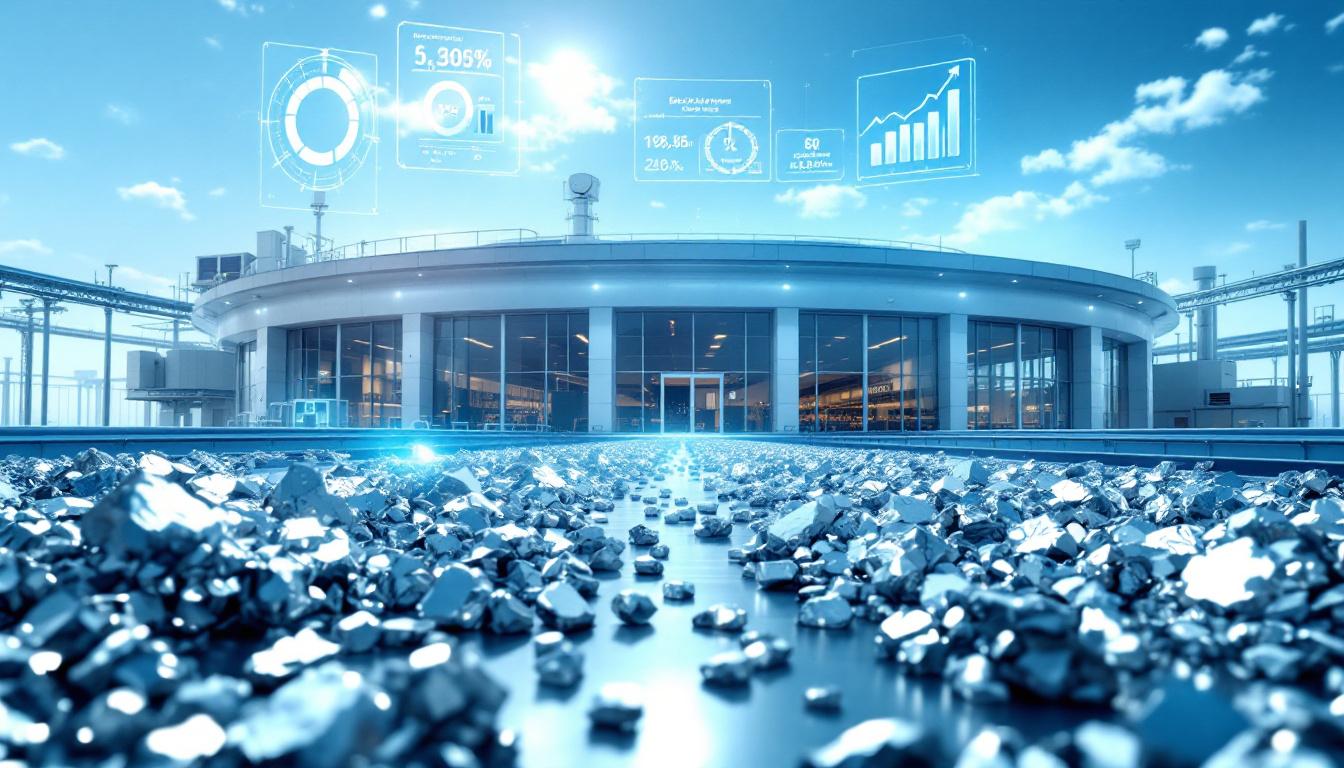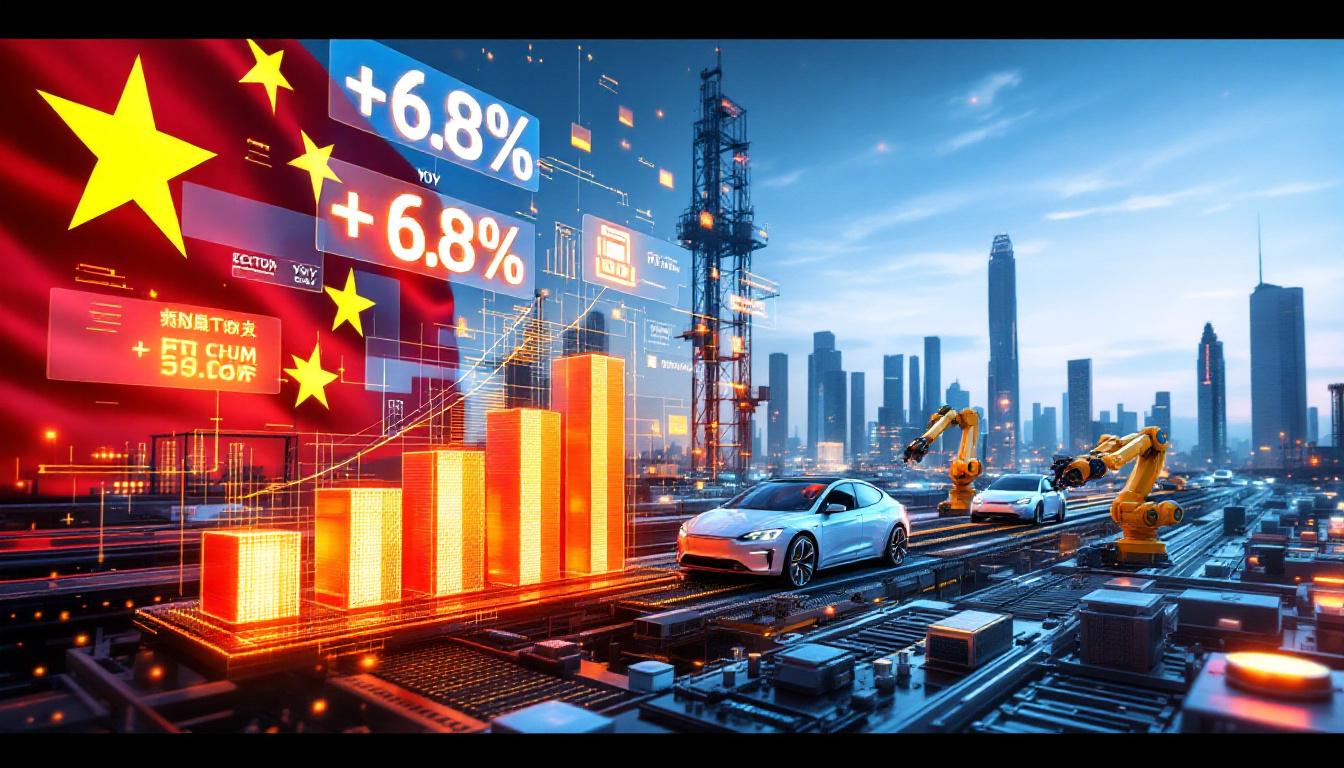What Are the Latest Developments in Magnesium Recycling Technology?
Advanced Recycling Innovations in Europe
Germany's Speira Group has made significant strides in magnesium recycling technology with their recent upgrade to the Töging facility. The plant now features a state-of-the-art automated production line equipped with specialized sorting equipment capable of processing previously problematic oily magnesium alloy scrap. This technological advancement represents a major battery recycling breakthrough in recycling capabilities within the European Union.
The innovative separation technology efficiently removes cutting fluid contaminants that previously limited recycling potential. According to industry data, the new process achieves recycled magnesium purity levels of **99.2%**—a substantial improvement over previous industry standards of approximately 98.5%. This near-primary-grade quality opens new applications for recycled material in demanding sectors.
The facility's processing capacity has increased by 15% annually through efficiency improvements without expanding its physical footprint. According to Dr. Heinrich Mueller, Speira's Technical Director, "This upgrade represents a fundamental shift in recycling economics, allowing us to process materials we previously had to reject while achieving higher quality outputs."
Trial supplies to European battery manufacturers are scheduled to begin in Q4 2025, with several tier-one automotive suppliers already expressing interest in long-term supply agreements.
Benefits of Enhanced Recycling Capabilities
The advancement in magnesium recycling technology offers multiple strategic advantages for European manufacturers:
- Reduced dependency on primary magnesium sources – European manufacturers currently rely on imports for 97% of their magnesium needs, with China dominating global supply.
- Significantly lower environmental footprint – Recycling magnesium requires only 5-10% of the energy needed for primary production, with a corresponding reduction in carbon emissions.
- Substantial cost reduction potential – By processing previously unrecyclable material streams, manufacturers can reduce raw material costs by 15-20%.
- Support for circular economy initiatives – Aligns with the EU's Critical Raw Materials Act, which targets increased recycling rates for strategically important materials.
- Supply chain resilience – Addresses vulnerabilities in the new energy vehicle (NEV) sector by establishing reliable domestic material streams.
"The economics have shifted dramatically," notes industry analyst Maria Kowalski. "With primary magnesium prices experiencing volatility in recent years, high-purity recycled material offers both price stability and environmental benefits that manufacturers increasingly require."
How Are New Extraction Technologies Changing the Magnesium Landscape?
Breakthrough in Lithium-Magnesium Co-Extraction
Clontarf Energy has announced successful pilot performance of their proprietary direct lithium extraction technology, representing a potential game-changer for both critical minerals. The novel process simultaneously extracts both lithium and magnesium elements from salt lake brine with unprecedented efficiency rates.
The technology has advanced beyond the experimental stage and is ready for commercial application after demonstrating consistent extraction rates above 85% for both elements. According to Clontarf's CEO James Robertson: "Traditional extraction methods force companies to choose between lithium or magnesium recovery. Our process eliminates this trade-off, substantially improving project economics while reducing the environmental footprint."
Legal approval procedures are underway with active negotiations with potential off-takers in both the battery and lightweight materials sectors. The EU Green Infrastructure Fund has expressed interest in financial backing, recognizing the strategic importance of establishing alternative supply sources within friendly jurisdictions.
The project targets a production capacity of 10,000 metric tons of magnesium annually, with lithium production providing additional revenue streams. Construction is scheduled to begin in early 2026, with initial production expected by mid-2027.
Greenland's Molybdenum-Magnesium Project Advances
The EU critical raw materials supply chain received a significant boost with approved mining permits for the Malmbjerg project in Greenland. This project represents a strategic shift in EU resource policy, with comprehensive development plans including specialized facilities for magnesium extraction from brine deposits adjacent to the primary molybdenum resource.
The project is expected to meet approximately 25% of the EU's magnesium demand requirements once fully operational, with a planned production capacity of 30,000 tons annually. A $1.6 billion long-term off-take agreement signed with Finland's Outokumpu underscores the project's economic viability and strategic importance.
The development carries particular significance in reducing the EU's extreme dependence on Chinese imports:
- Currently 97% of EU magnesium is imported from China
- 87% of global molybdenum supply comes from China
"This project represents the kind of strategic resource development the EU must prioritize," explains resource policy expert Dr. Henrik Svensson. "By combining molybdenum and magnesium extraction in a single project within an EU-aligned jurisdiction, we address multiple supply vulnerabilities simultaneously while minimizing environmental impact."
The project employs innovative low-temperature extraction methods that reduce energy requirements by approximately 40% compared to traditional processes, aligning with the EU's carbon reduction targets.
What Impact Will New Tariff Policies Have on Global Magnesium Trade?
US-Vietnam Tariff Policy Changes
New tariff policy insights officially implemented on July 9, 2025, have introduced a complex regulatory framework affecting international trends focus on upgrading recycled magnesium and reconstructing supply chains. The benchmark tariff rate for Vietnamese exports has been reduced to 20% (down from initially planned 46%), reflecting ongoing diplomatic negotiations and recognition of Vietnam's growing role in global supply chains.
However, a 40% punitive tariff has been maintained on "transshipped" goods containing Chinese components with minimal processing—a measure specifically targeting circumvention practices that have increased since earlier tariff implementations. The policy covers major export categories including textiles, electronic components, and aquatic products.
"The reduced benchmark rate acknowledges legitimate Vietnamese manufacturing, while the punitive rate targets specific practices undermining trade policy objectives," explains trade policy analyst Robert Chang. "The challenge lies in the practical implementation."
The identification criteria for transshipped goods remains ambiguous, potentially leading to trade disputes and creating uncertainty for manufacturers. According to customs data, approximately 35% of magnesium-containing products exported from Vietnam include components originating in China, placing them in a regulatory gray area.
Industry analysts suggest the policy aims to balance bilateral trade while addressing tariff evasion concerns, but implementation challenges may create short-term market disruptions.
Potential Shifts in Global Trade Flows
The evolving tariff landscape is triggering fundamental restructuring of global magnesium trade patterns:
- European manufacturers may increase sourcing from upgraded recycling facilities, with several automotive suppliers already establishing long-term agreements with Speira Group and other European recyclers.
- New extraction projects could diversify supply sources away from traditional producers, with the Greenland project potentially capturing 25% of European demand by 2028.
- Uncertainty around "transshipped" classification may create short-term market volatility, particularly for manufacturers with complex supply chains spanning multiple Asian countries.
- Companies are restructuring supply chains to adapt to changing tariff landscapes, with several tier-one automotive suppliers establishing documentation systems tracing material origin from mine to finished component.
- Regional processing hubs could emerge to navigate complex trade regulations, with Malaysia and Thailand positioning themselves as compliant processing centers.
"We're seeing a fundamental reconfiguration of magnesium trade flows," notes supply chain consultant Jennifer Wiley. "Companies are no longer optimizing purely for cost, but increasingly for regulatory certainty and supply security."
The adjustment period may last 12-18 months as manufacturers establish new supplier relationships and certification processes, with full stabilization expected by late 2026.
What Is the Current State of the Global Magnesium Market?
Price Trends and Market Dynamics
The current magnesium market is characterized by balanced tension between sellers and buyers, with prices maintaining relative stability despite underlying structural changes. Prices in China's primary production regions continue their sideways movement, with FOB prices hovering around $2,500-2,700 per metric ton—approximately 8% lower than peak 2023 levels but still 15% above pre-pandemic averages.
European demand is facing temporary pressure during the traditional summer manufacturing slowdown, with spot prices in Rotterdam showing marginal declines of 3-5% since May. However, forward contracts for Q4 2025 and Q1 2026 are trading at premiums of 7-10%, reflecting anticipated demand recovery and ongoing supply concerns.
Supply chain localization efforts are gradually reducing dependence on Chinese exports, with European recycled material capturing an additional 3% market share annually since 2023. Despite this trend, China remains the dominant global supplier, controlling approximately 85% of primary production.
The short-term market is influenced by several countervailing factors:
- Policy uncertainties surrounding tariff implementations and the EU Critical Raw Materials Act
- Seasonal demand fluctuations with summer manufacturing slowdowns
- Emerging alternative supply sources from recycling and new extraction projects
- Shifting automotive demand as EV production targets adjust to changing consumer preferences
Price volatility is expected to continue through the current quarter, with stabilization likely in Q4 as manufacturing activity normalizes and policy clarity improves.
Future Market Outlook
The second half of 2025 may see stabilization driven by increasing demand from NEV and energy storage sectors. According to industry forecasts, magnesium demand for battery components is projected to grow at 18% annually through 2030, creating a structural support for prices despite new supply sources.
Upgraded recycling facilities are expected to impact regional supply-demand balances, particularly in Europe where the recycling rate could reach 30% by 2027. However, this remains insufficient to meet total demand, ensuring continued reliance on imports.
New extraction technologies could introduce additional supply sources by 2026, with the Clontarf Energy and Greenland projects potentially adding 40,000 tons of annual production outside traditional channels. This represents approximately 5% of global demand, providing meaningful but not transformative supply diversification.
Tariff policy adjustments are likely to reshape international trade patterns, with increased processing within regional blocs to avoid punitive duties. This may increase costs by 3-5% but improve supply chain resilience and traceability.
The EU's critical minerals strategy emphasizing domestic production and recycling will continue driving investment in alternative sources, with public funding potentially reaching €3 billion by 2027 across the critical minerals sector.
Long-term reduction in Chinese market dominance appears inevitable as alternative sources develop, though the transition will likely span 5-7 years rather than creating immediate shifts.
How Are Supply Chains Being Reconstructed?
Regional Self-Sufficiency Initiatives
The EU is actively pursuing critical raw materials independence through a multi-faceted approach that represents a fundamental shift from previous resource strategies:
- Investment in advanced recycling technologies – The European Commission has allocated €750 million specifically for recycling innovation, with the Speira Group upgrade representing one successful implementation.
- Development of new extraction projects within EU-friendly jurisdictions – The Greenland Malmbjerg project exemplifies this approach, with expedited permitting and €200 million in development loans.
- Financial support for innovative processing methods – Direct funding for technologies like Clontarf Energy's co-extraction process through the EU Green Infrastructure Fund.
- Long-term off-take agreements with strategic suppliers – The €1.6 billion agreement between Outokumpu and the Malmbjerg project developers provides financial certainty for capital-intensive projects.
North American supply chain restructuring has taken a different approach, focusing on:
- Tariff policies to discourage transshipment – The US-Vietnam regulations represent one element of a broader strategy targeting circumvention.
- Development of domestic processing capabilities – The Inflation Reduction Act has allocated $2.8 billion for domestic critical minerals processing.
- Strategic partnerships with allied nations – Formal minerals security agreements with Australia, Canada, and select South American producers.
"We're witnessing the regionalization of supply chains that were previously globalized," notes Dr. Elena Rodriguez, supply chain researcher at MIT. "This represents a fundamental shift from pure efficiency to a balance between efficiency and resilience."
Industry Adaptation Strategies
Companies across the value chain are implementing diverse strategies to navigate the changing landscape:
- Battery manufacturers are exploring magnesium alternatives and efficiency improvements, with several next-generation cathode designs reducing magnesium content by 15-20% while maintaining performance.
- Automotive companies are diversifying supplier networks to mitigate disruption risks, typically expanding from 2-3 suppliers per component to 4-6 with geographical diversification.
- Material science advancements are reducing dependency on specific raw materials, with high-strength aluminum alloys substituting for magnesium in some structural applications.
- Vertical integration is increasing among major manufacturers, with several automotive OEMs taking equity positions in magnesium producers.
- Enhanced traceability systems to navigate complex tariff environments, with blockchain-based solutions tracking material origin from extraction through processing.
Industry leaders are increasingly viewing supply chain resilience as a competitive advantage rather than merely a risk management function. According to a recent McKinsey survey, 78% of automotive executives now consider supply chain resilience a "top-three strategic priority," compared to just 36% in 2019.
"The companies succeeding in this environment have moved beyond reactive measures to proactive supply chain design," explains supply chain consultant Mark Davidson. "They're building optionality and transparency into their systems from the ground up."
FAQ: Magnesium Market and Supply Chain Developments
What is driving the push for recycled magnesium?
The drive toward recycled magnesium stems from multiple factors including supply chain security concerns, environmental sustainability goals, cost reduction opportunities, and regulatory pressures to reduce carbon footprints in manufacturing. The EU's critical raw materials strategy specifically identifies magnesium as a priority material for circular economy initiatives.
Since 2023, magnesium price volatility has further incentivized recycling, with spot price fluctuations of up to 30% creating significant cost uncertainty for manufacturers. Recycled material typically trades at more stable price points, providing both environmental and financial benefits.
How does magnesium recycling compare to primary production?
Recycling magnesium typically requires only 5-10% of the energy needed for primary production, resulting in significantly lower CO2 emissions. Modern recycling technologies, such as those implemented by Speira Group, can now achieve purity levels approaching primary production standards while eliminating the environmental impacts of mining and processing.
The carbon footprint differential is substantial, with primary production generating approximately 25-30 tons of CO2 per ton of magnesium, compared to 2-3 tons for advanced recycling operations. This 90% reduction aligns with increasingly stringent carbon regulations in Europe and North America.
What industries are most affected by magnesium supply chain changes?
The automotive sector, particularly electric vehicle manufacturers, faces the most significant impact as magnesium is crucial for lightweight structural components and battery technologies. A typical electric vehicle contains 20-45 kg of magnesium, compared to 10-15 kg in conventional vehicles.
Aerospace, electronics, and construction industries also rely heavily on magnesium alloys and will need to adapt to changing supply dynamics. The aerospace sector is particularly vulnerable to supply disruptions due to stringent certification requirements that make supplier changes costly and time-consuming.
Healthcare applications, including medical devices and implants utilizing magnesium's biocompatible properties, represent a small but growing segment that requires exceptionally high purity levels—making them particularly dependent on stable, high-quality supply sources.
How might tariff policies reshape global magnesium trade?
Tariff adjustments create incentives for companies to establish processing facilities in strategic locations to avoid punitive rates. This could lead to the development of regional processing hubs, increased investment in recycling infrastructure, and more complex supply chain documentation systems to demonstrate material origin compliance.
The ultimate impact depends on enforcement mechanisms—particularly the criteria for determining "substantial transformation" that exempts products from higher tariff rates. Several industry associations have petitioned for clearer guidelines to reduce compliance uncertainty.
Material tracing technologies, including blockchain-based systems and isotope testing for geological origin verification, are rapidly developing in response to these regulatory changes, creating a new segment within the supply chain technology sector.
Further Exploration
Readers interested in learning more about global magnesium market trends can explore related educational content, such as the Shanghai Metal Market industry reports and analysis available through their information platform. The International Magnesium Association also provides technical resources on reclamation innovation trends and emerging extraction technologies.
For those focused on the investment implications of these international trends focus on upgrading recycled magnesium and reconstructing supply chains, specialist commodity research firms such as CRU Group and Wood Mackenzie publish detailed market outlooks incorporating these emerging developments.
Ready to Spot the Next Major Mineral Discovery?
Don't miss out on valuable investment opportunities in the mining sector! Discovery Alert's proprietary Discovery IQ model provides real-time notifications when significant mineral discoveries are announced on the ASX, giving you a crucial edge in the market. Visit our discoveries page to see how major mineral finds can generate substantial returns.




